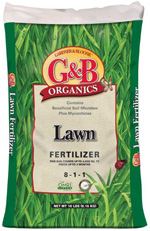|

     
|
 |
"We can complain because rose bushes have thorns, or rejoice because thorn bushes have roses." |
 |
Have a safe and Happy 4th of July. We will be closed on Monday, July 4th. We will resume our normal business hours on Tuesday: 7:30 - 5:30. |
 |
|
Planting Tropical plants are popular now and can be brought into any garden, whether tropical, cottage, or country themes. Flowering shrubs include hibiscus, brugmansia (Angel's Trumpet), canna, bougainvillea, and vines such as passion flower or Burmese honeysuckle. Large-leaf evergreens include philodendrons, xanadu, tree ferns, and gingers. You can even include abutilon, which comes in several colors including red, yellow, orange, and pink. Harvesting Maintenance It's feeding time for your flowerbeds, roses, vegetables and warm-season lawns. Come in and ask one of us which fertilizers will be best for each of your plant needs. We offer a wide selection of fertilizers: multipurpose, organic, and slow release. You can do some pruning, even though it's summertime. Fuchsia 'Gartenmeister,' gaura, and salvias will look much better if cut back by about 1/3. Oh...and your catmint, too. If you forgot to increase your watering from the spring months, you must do so now. Trees (non-citrus) and shrubs will need deep soaks once each month in the summer, and regular irrigation in between. Citrus and your flowerbeds need regular weekly watering. Those of you growing tomatoes and peppers, watch for tomato hornworms. They will need to be hand-picked from your foliage. As usual, mulch, mulch, mulch! We will always tell you to mulch. This does not mean mound up the mulch to 5 feet. It means continue to replenish the mulch and maintain a 2-4 inch blanket over your soil. So when you hear us singing the MULCH song, you know just what we mean! |
 |
|
No doubt you're seeing these riotous shrubs and small trees in bloom right now! These beauties like it hot, and are at their best in the warm months. Some plants grow tired and stressed when high temperatures persist day after day. Crape myrtles, on the other hand, thrive under these conditions, making them valuable flowering shrubs or small trees in the summer landscape. Whether trained as standard or multi-trunk trees, crape myrtles make beautiful specimen or accent plants. Showy crinkled flowers are abundant throughout summer, with colors ranging from the reds to pinks, purples, and white. 
Plant these lovely shrubs in any sunny spot where summer color is needed. Planting is best done in late spring or summer, when they are actively growing. For desired size and shape, prune in early spring. Don't worry too much about your pruning skills, as they bloom on new wood. However, it is important to deadhead as blossoms fade in order to encourage continuous bloom. Crape myrtles are long-lived, drought tolerant (once established) and relatively pest free, although sometimes aphids and powdery mildew can be a problem. Watering in the morning, to give the foliage plenty of time to dry, will help keep mildew away. As if that weren't enough, the handsome bark and fall leaf color add to an already stunning plant. Add one or more to your landscape, then just sit back and enjoy the show! |
 |
|
The major reason lavender plants are so prized is that their flowers keep their fragrance when dried. Besides being beautiful and aromatic, lavender flowers are also edible. They can be used as a seasoning, added to salads, baked into cookies and brewed into tea. They can also be candied and used as a cake decoration. For best drying results, harvest the flowers as the buds first begin to open. In general, wait until any rain or dew has dried from the plants. Harvest midday when the heat brings the most fragrance out of the flowers. Hang in small bunches upside down in a warm, dry spot with good air circulation and out of direct light. Use rubber bands to tie the stems together for drying because they will contract along with the drying stems. If you wish to remove the flower buds from the stems for potpourri after drying, place the bound bundles inside a pillow case. Then roll it up and gently press and roll it on a hard surface--as if it were a rolling pin. (You can throw away the stems or take them camping and place on a campfire to repel mosquitoes.) Then scoop out the flower buds and place in sachets or potpourri dishes. |

|
If you have plants that suddenly keel over in the middle of the night, you might have cutworms. Closer inspection will usually reveal that the main stem has been severed from the roots. The adult cutworms are night-flying moths that lay eggs on grass tips or on the soil next to lawn or plant stems in the fall. In the spring, the larvae emerge and begin developing, feeding on leaves, buds and soft plant stems as they mature. They get their name from their habit of "cutting" off a seedling at ground level by chewing through the stem. A number of species are involved, so identification is most easily done by identifying the damage. Most cutworms will roll up in a ball if disturbed. Natural remedies include pouring a ring of molasses around the plants, and placing foil or cardboard collars around your plants. Collars should penetrate at least an inch down and up several inches. Also helpful are beneficial nematodes or a pesticide.
|

IN CONGRESS, JULY 4, 1776The unanimous Declaration of the thirteen united States of America
We hold these truths to be self-evident, that all men are created equal, that they are endowed by their Creator with certain unalienable Rights, that among these are Life, Liberty and the pursuit of Happiness. |

| What You'll Need:
Step by Step:
Yield: 4 servings |
 click here for a printer friendly version of this page
click here for a printer friendly version of this page
 |
Written content © Garden Partners LLC, or respective authors. All Rights Reserved. Privacy Policy. All written content contained in this site is protected by United States copyright law and may not be reproduced, distributed, transmitted, displayed, published, or broadcast without prior written permission of Garden Partners, LLC. You may not alter or remove any trademark, copyright or other notice from copies of the content. |




 hen in the Course of human events it becomes necessary for one people to dissolve the political bands which have connected them with another and to assume among the powers of the earth, the separate and equal station to which the Laws of Nature and of Nature's God entitle them, a decent respect to the opinions of mankind requires that they should declare the causes which impel them to the separation.
hen in the Course of human events it becomes necessary for one people to dissolve the political bands which have connected them with another and to assume among the powers of the earth, the separate and equal station to which the Laws of Nature and of Nature's God entitle them, a decent respect to the opinions of mankind requires that they should declare the causes which impel them to the separation.